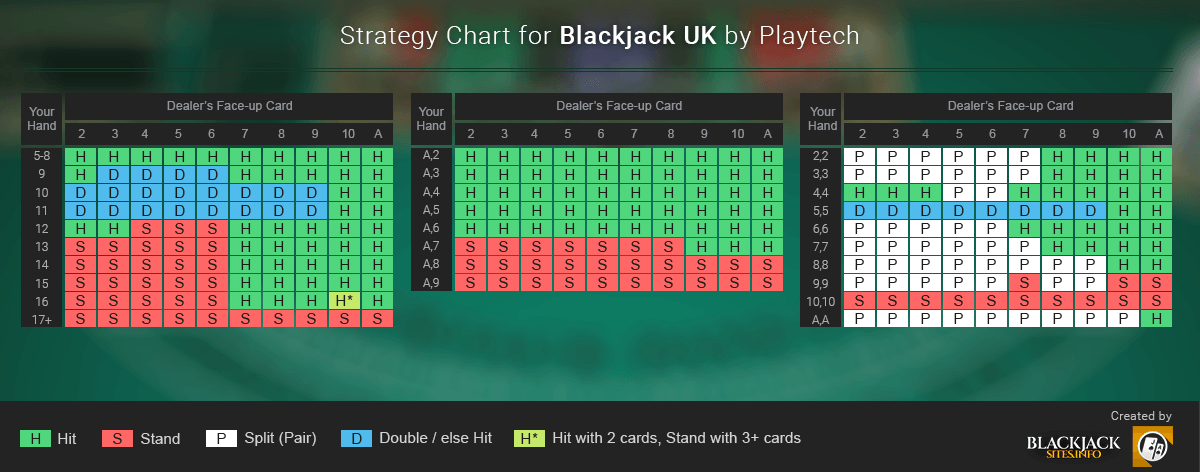Blackjack Splitting 10s
Blackjack Splitting 10s Game
Tips For Splitting 10s In Blackjack – Exceptions The blackjack strategist went on to describe a few very rare occasions when he himself felt it was in his best interest to split 10s in a blackjack game. The first is during a game of Face-Up 21, a blackjack variant in which both of the dealer’s cards are exposed. In Face-up Blackjack, where all the cards dealt are exposed, including both dealer's cards, the correct strategy is to split 10s against the dealer's 13, 14, 15 or 16. Neversplit10s is an entertainment channel. Its main purpose is to provide education and entertainment on various casino games including but not limited to blackjack, poker, Texas holdem, roulette. Why not split my 10's. If the count was very high, a lot of 10s in the deck, then the chance of the dealer having a 16 then hitting to bust is a high probality. If I split my 10s and get more 10s then I will have more hands of 20 on the table. Or I just keep spliting to the table max. Blackjack Variants which Call for Players to Split 10’s The only blackjack game variant which is going to have a perfect playing strategy that will occasionally see you being able to split a pair of 10’s as the correct playing decision is the game of Double Exposure Blackjack.
Among my recent emails from players, I have several on the topic of splitting tens. One player mentioned that he seems to win more often than not when splitting tens against a dealer 5 or 6, so he was wondering if the play could be justified. Actually, his basic assertion is correct. You will win more often than not when splitting tens in those situations. But, winning more than 50% of the time is only part of the story.
When the dealer has a 5 or 6 up, he will bust more than 40% of the time. That’s why basic strategy against those dealer upcards becomes quite a bit more aggressive. You should double 9, 10, and 11. Among soft totals, you should double A2 through A7. So, if you are dealt a pat 20, why not split the pair and get more money on the table while the dealer is weak?
Like all of basic strategy, this decision comes down to which action makes you the most money in the long run. Your single hand of a pat 20 is worth more than double what a single hand starting with a ten is worth.
Splitting Tens costs you money.
Assume we are playing a 6 deck, H17 game and we are dealt a pair of 10s against a dealer 6. Our initial bet is $10.
If we stand with 20, we’ll win our $10 bet 78% of the time. We’ll push with a dealer 20 about 11% of the time, and lose to a dealer 21 another 11% of the time. On average, we’ll win $6.77 by standing.
If we instead split the tens (only once) and put a $10 bet on each hand, what happens? On average, each of these hands is still a winner, but the average win on each hand is only $2.78. Our total expected win on both hands combined is just $5.56, which is more than $1 less than the value if we had just stood on the 20. Despite having twice as much money bet in a favorable situation, we are now expected to win less overall.
If it’s bad to split tens just once, it is of course worse to resplit them. If your strategy is to split tens and resplit up to the usual three times allowed, your total bet will be either $20, $30 or $40. Over all of these possibilities, your expected profit drops further yet to a grand total of only $4.51, more than $2 less than the value of your initial single $10 bet on a pat 20.
What about card counters?
Despite the risk of confusing basic strategy players, I can’t talk about splitting tens without addressing what happens if you count cards. Because card counters have extra information about the remaining cards to be dealt, they are able to identify occasions when splitting tens does become the mathematically correct play. In our example game, the Hi-Lo index number for splitting tens against a dealer 6 is +4. (For indexes for other specific games, see our Advanced Blackjack Strategy cards.) When the true count is at +4 or higher, the value of multiple hands surpasses the value of the pat 20.
Having said that, even if the true count indicates that the play is warranted it may still be a bad idea to split tens. Because the act of splitting tens draws so much attention, most card counters choose to ignore the index for splitting tens, and just keep the pat 20 regardless of the count. In some casinos, the dealer is required to announce to the pit when a player splits tens. Pit bosses know that only two kinds of players split tens… Those that don’t know any better, and those that know full-well what they are doing. If you are a card counter, you had better be sure the pit thinks you are completely harmless before you split tens. If they already view you with any suspicion, this move will confirm it.
In any case, I want to be perfectly clear about one point…
Basic strategy players shouldn’t split tens. Period.
Just don’t do it. It may seem fun, and it may be exciting. But splitting tens is just giving the casino extra money. They don’t need any extra. Stand with your 20.


Blackjack Splitting 10s Vs
To find the hand values for this article, I used MGP’s free Blackjack Combinatorial Analyzer software for Windows, available at this site. If you want to explore alternative strategies and research the expected value, it is a powerful tool.